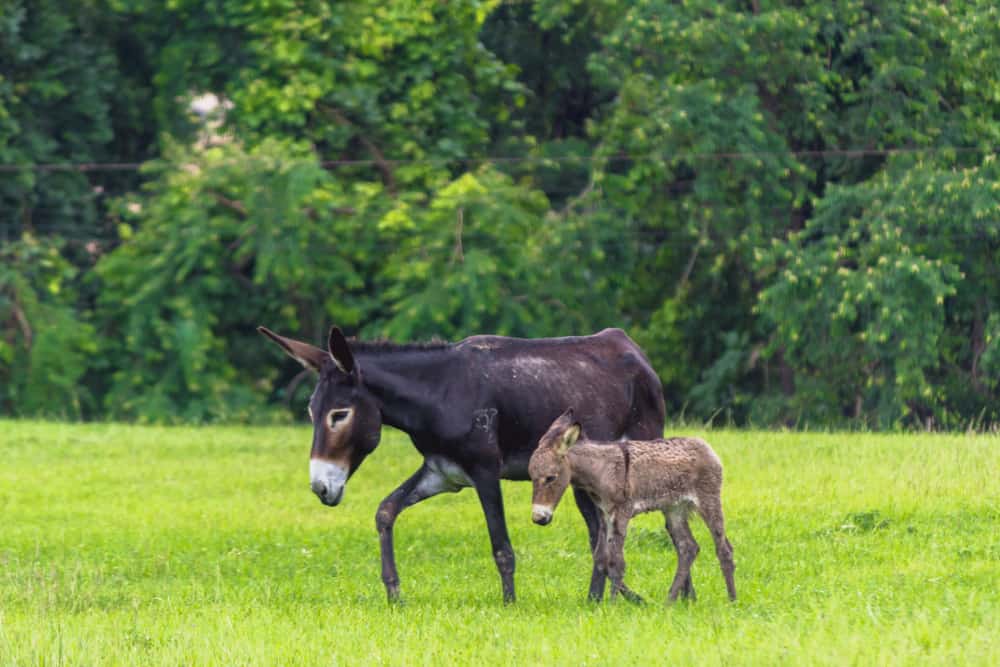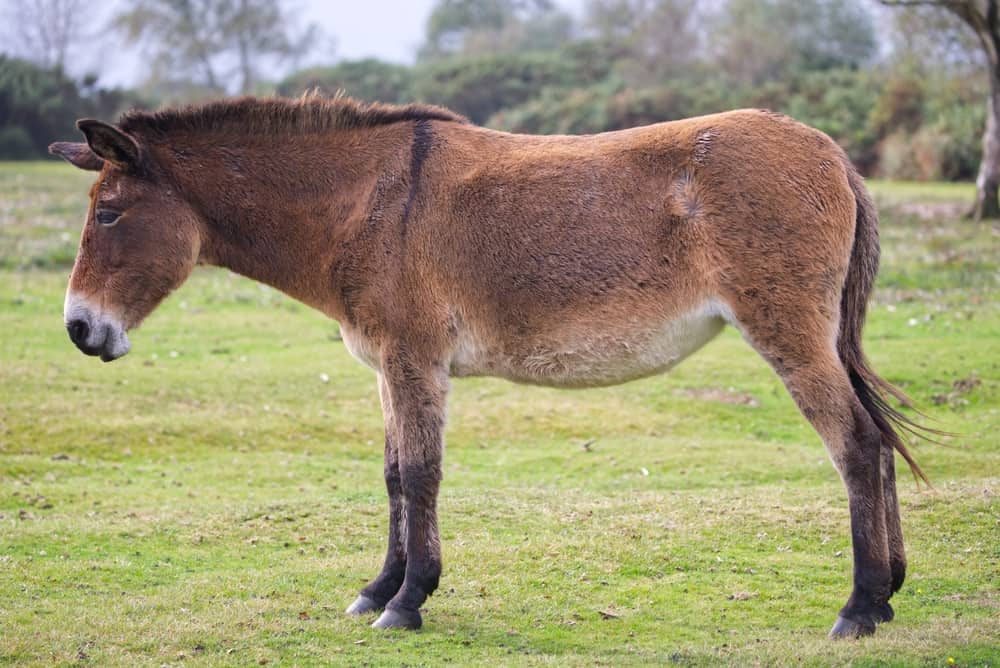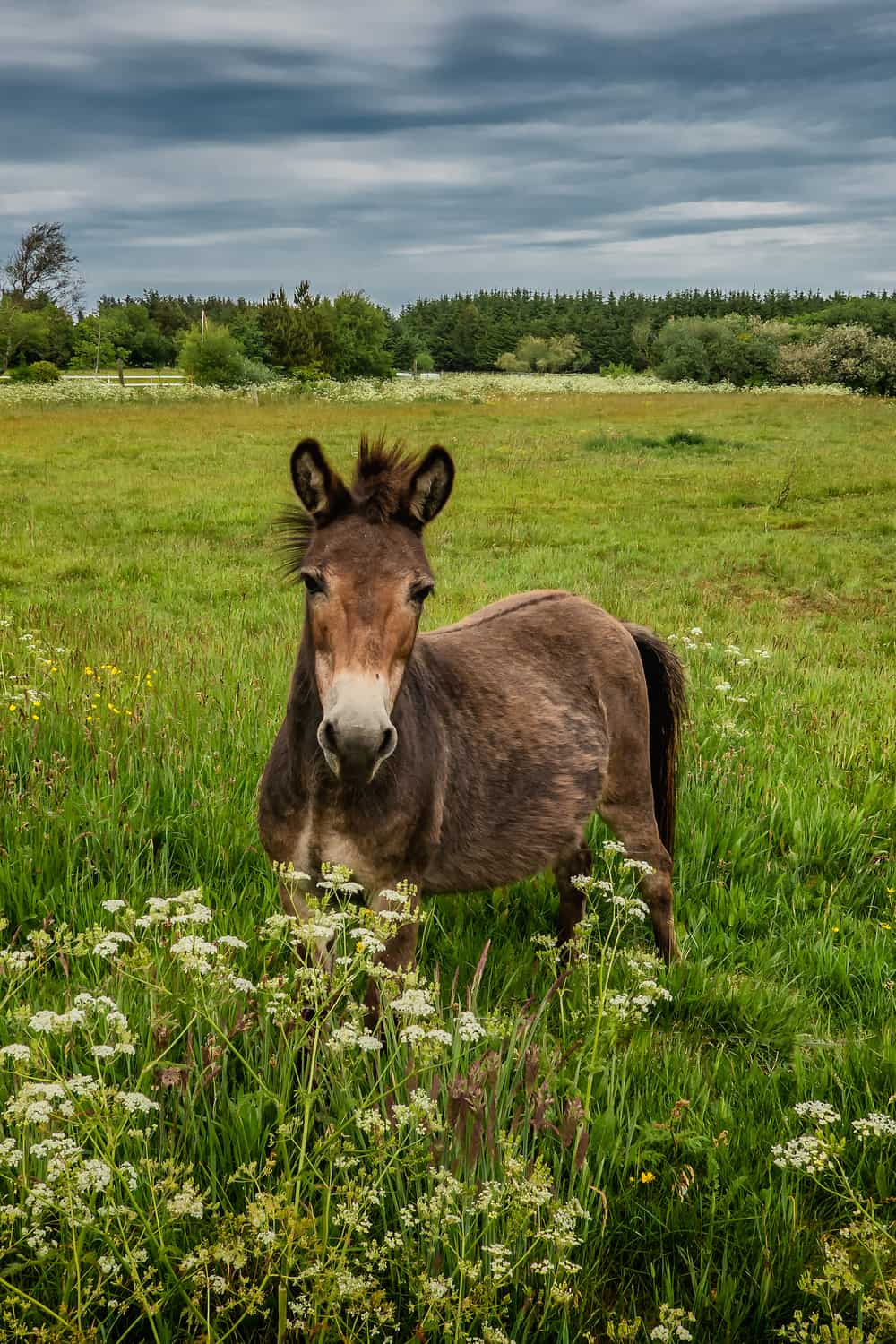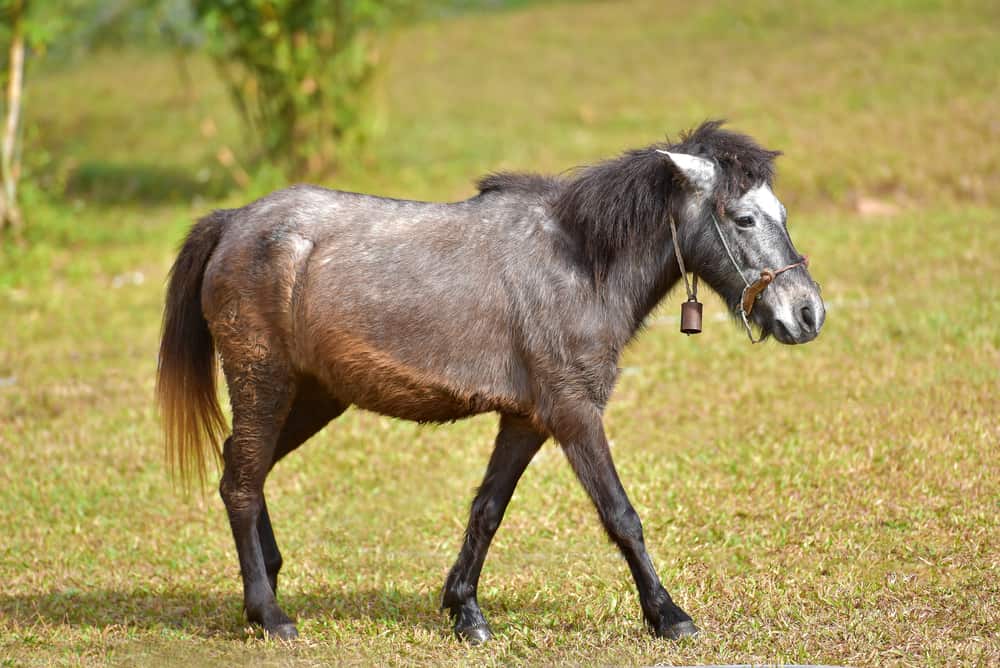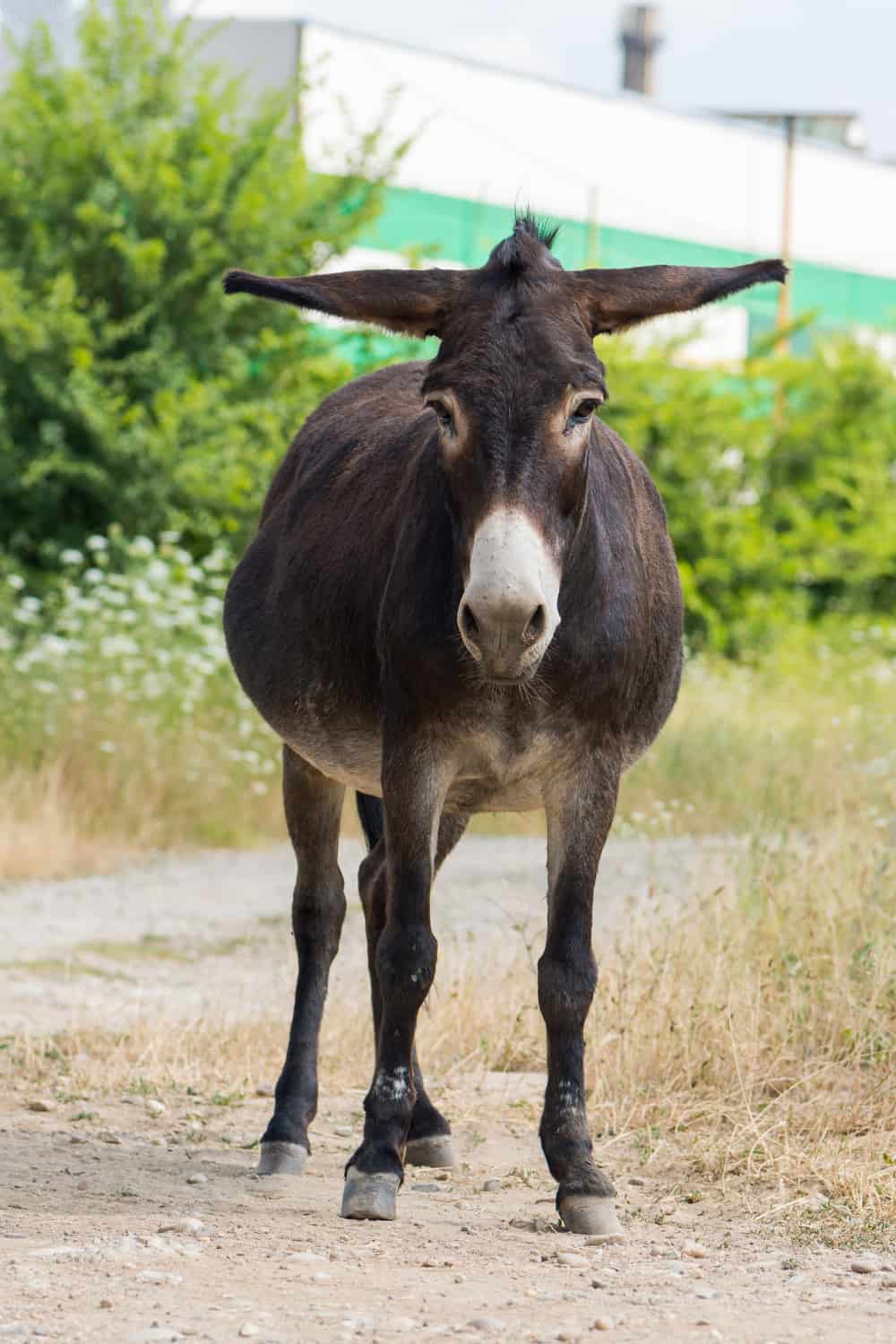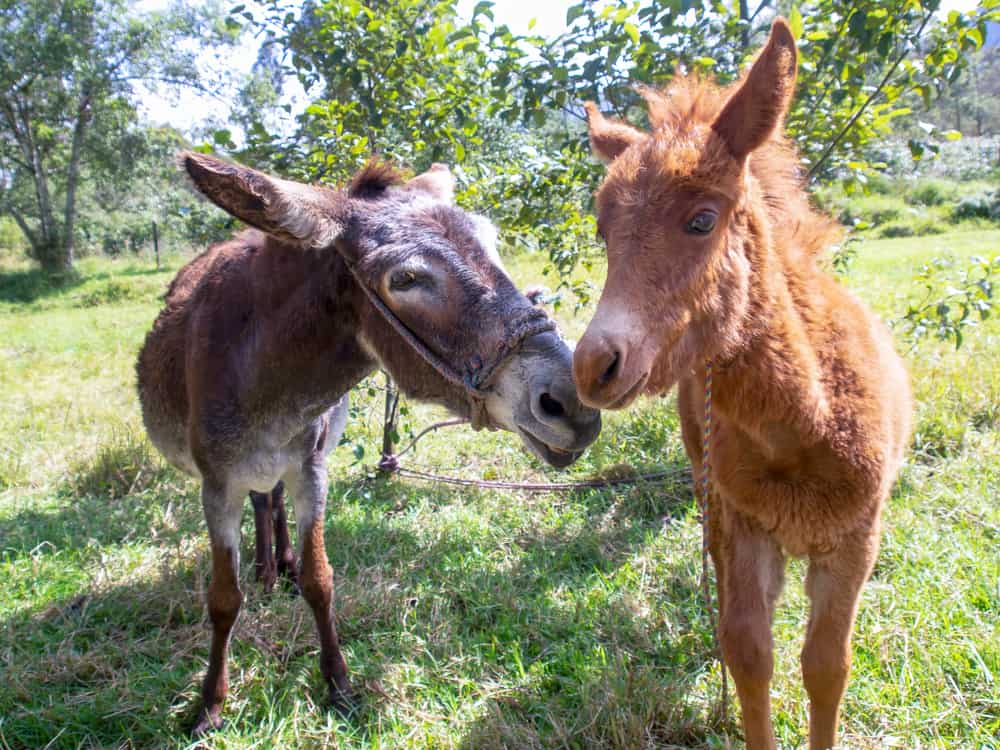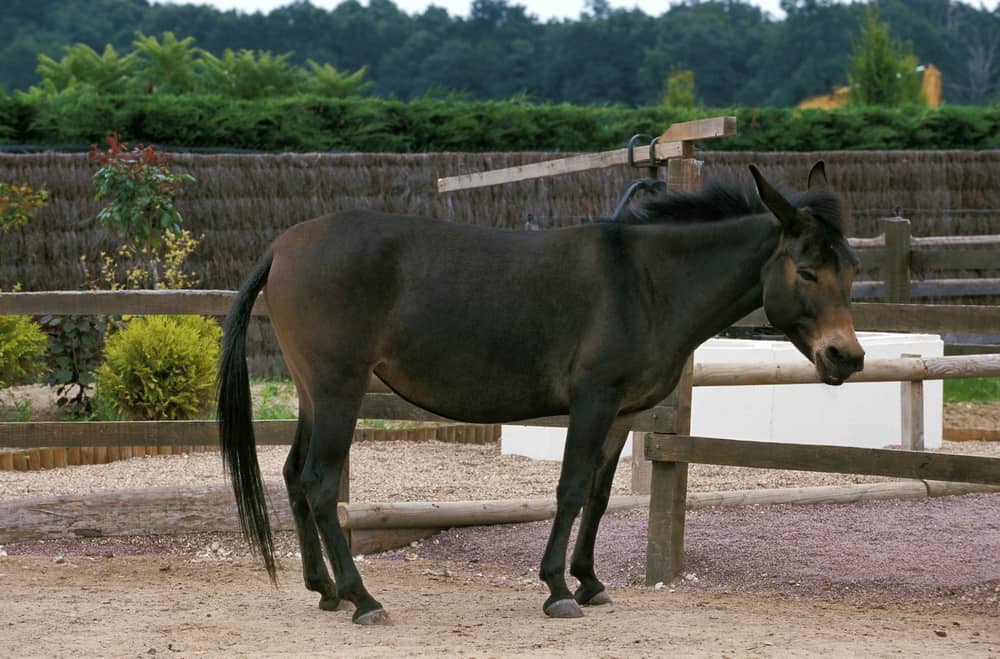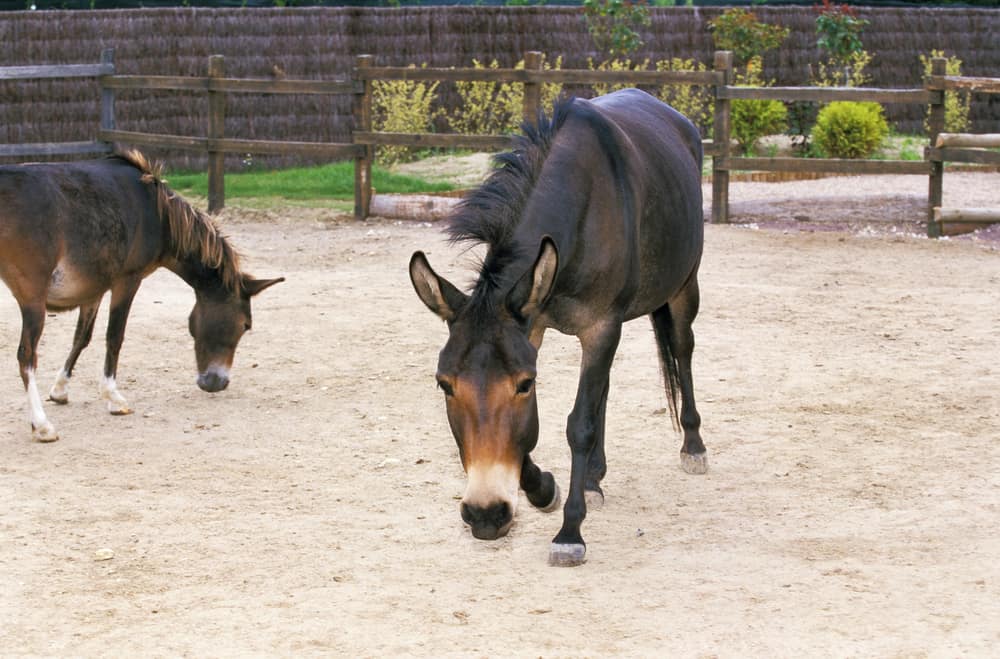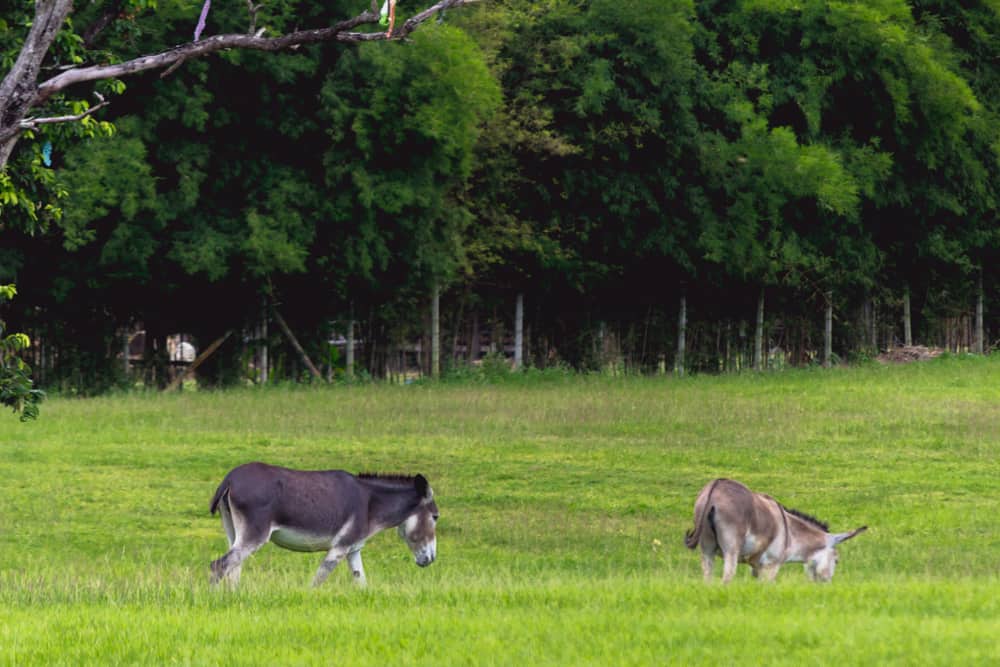Do hinnies and mules appear the same to you?
You are not alone!
Many people often confuse these equine hybrids and use the names interchangeably.
A hinny and a mule are each the offspring of a cross between a donkey and horse. But there are some subtle differences between the hybrids.
Whether you are shopping for a new equine or are just curious about the difference between a hinny vs mule, you have come to the right place.
In this article, you will learn more about these popular equine breeds and how to tell them apart.
Let’s dive in!
Hinny vs Mule: Overview
In the following sections, I will take you through the qualities of a hinny and mule separately.
Later, we’ll compare the two hybrids with a quick rundown of their difference and similarities.
What Is A Hinny?
A hinny is the offspring of a stallion (male horse) and a jenny or jennet (female donkey).
They are generally smaller than mules. But, you can tell apart a hinny by its thicker mane, stout legs, and hooves that take after the donkey mother.
What Is A Mule?
A mule is a cross between a jack (male donkey) and mare (female horse).
Because they come from a female horse, most mules share a lot of similarities with a horse.
But, their ears are longer and muscles straighter than those of a horse, making them quite powerful.
Generally, mules have bigger and studier bodies than hinnies. Their hooves resemble those of a horse but smaller than those of a hinny, making them less stable on the trails.
Mules also have a short, barely-there mane and a short tail resembling a horse’s.
Personality and temperament
Hinny
Hinnies are generally friendly and gentle, making them a popular choice among equestrians looking for a disciplined, easy-to-train companion.
They are comparably slower. But, on the upside, they tend to be more careful.
These hybrids are not as picky with food as mules and they can survive in harsh, rocky terrains with limited access to food.
Because they come from a jenny, hinnies are studier and have no problems working hard. As such, many rural households prefer hinnies to mules.
Hinnies have a calm disposition. They are less adventurous and more obedient, making them easier for beginner equestrians to manage.
Mule
Mules combine the best characteristics of a horse and donkey. They are agile, curious, and adventurous.
Their strength and endurance, traits borrowed from father donkey, is quite impressive.
But, some people find these characteristics off-putting as they make the mule appear strong-headed and obstinate. Ever heard of the phrase “as stubborn as a mule?’’
But, when treated well, mules can be friendly, thoughtful, and patient, a personality trait inherited from the donkey.
That said, a mule will not hesitate to defend itself when threatened. It can throw hard kicks, so this is something you want to watch out for.
Training and Obedience
When you are thinking of bringing home a new animal, you should consider how easy training it is.
From my own experience with hinnies and mules, both can be difficult to train.
Both are incredibly intelligent and independent-minded, making it hard for them to easily follow instructions.
But, if you use the right techniques and muster a bit of patience, you can successfully train them.
Hinnies are comparably easier to train than mules. Mules are more pragmatic. They will refuse to follow instructions if they feel threatened or unsafe.
Hinnies are slightly more compliant and eager to please. They are more willing to obey instructions if you treat them with kindness and respect.
A common mistake I see among mule or hinny owners is attempting to apply the same techniques used for training horses on their hybrids.
This simply doesn’t work!
Your hinny or mule will require more patience and gentleness to acquiescence to your instructions.
Health and Lifespan
Hinny
Both hinnies and mules are generally healthy animals. They inherent the best qualities of their parent breeds including strength, endurance, and stamina.
The lifespan of a hinny is 30 years but some are known to live longer. They are less picky about their food, making them a great option if you are looking for a low-maintenance animal.
Hinnies are more stable and walk carefully. This, together with their strong hooves makes them less prone to injuries than horses and mules.
Mule
Mules have a lifespan of 40 years or more. They are known for their immense physical strength and endurance, which is even more than that of their parent breeds.
Compared to hinnies and horses, mules are less susceptible to disease and parasite. Their fortitude makes them a good pick for use in harsh, remote areas.
That said, mules have weaker and less stable hooves. They can easily injure themselves, making them slightly high maintenance.
Reproduction
A major commonality between hinnies and mules is that they cannot reproduce. For mammals to reproduce, each of the parent contributes half the number of chromosomes needed to produce an offspring.
Horse have 64 chromosomes and donkeys 62. When crossbred, their offspring end up having 63 chromosomes.
The extra pair of chromosomes prevents the mule and hinny from having offspring of their own.
But, in extremely rare occasions, some mules and hinnies have given birth.
Technically though, it is impossible for these animals to have offspring of their own.
Popularity
Mules are bred intentionally and their population is, therefore, larger than that of hinnies.
Breeders focus more on creating mules because of the animal’s outstanding endurance and strength.
Mules are more comfortable to ride and can be used in dressage and other competitive sport outside the farm.
Hinnies on other hand are conceived accidentally, making their population smaller. It is also more difficult for a female donkey to conceive, making hinnies even less common.
Generally, mules tend to be more drawn to humans, as they are open to exploration and adventure. The docile nature of hinnies gives them a bad reputation, making them a less popular choice.
Common Uses
Both hinnies and mules are pack animals. These animals are sturdy with a high level of stamina and endurance.
They are well adapted for rough terrains and hinnies can easily survive in areas with scarce vegetation
The docile nature of hinnies and their small stature makes them adorable pets for the experimental equine lover.
Mules have been bred and used for centuries in agricultural farms. They are also easier to ride than hinnies and can be spotted in riding events including endurance sports, showjumping, and dressage.
Hinny vs Mule: How To Identify One From the Other
A hinny and mule look almost identical.
You would need to pay close attention to their physical attributes and behaviors to notice the differences.
The first thing to look at is their size. A hinny has a smaller stature than a mule.
The next feature to compare is the shape of the head. Mules more closely resemble a donkey while the head of a hinny looks more like that of a horse.
Hinnies have a thicker e and shorter ears while mules have a thinner mane and tail, and longer ears.
But, looks can be deceiving when you are comparing a hinny vs mule.
There is another more accurate way to tell one animal from another. To get started, place a hinny or mule in a group of donkeys and horse. How they behave can tell you whether one is a mule or hinny.
A hinny will be more drawn to the donkeys in the group because they were born and raised by a jenny (female donkey).
Mules will be more attracted to the horses as they were born and raised by a mare (female horse).
As a general rule, mules are more common than hinnies.
Hinnies are conceived accidentally, and breeders are generally not keen on crossing a male horse with a female donkey. This makes hinnies generally rare.
So, when you are wondering whether an animal is a hinny or mule, the chances are high that it is a mule.
Summary: Comparing Hinny Vs. Mule
Hinnies and mules have some practical uses. But they can also be adorable pets and companions.
Both animals have gained a reputation for their stubbornness. It does take a bit of patience and an ability to treat the animals with respect and kindness for them to obey your instructions finally.
Mules are more common. The chances of coming across one are higher than doing so with a hinny.
Pay close attention to the subtle differences in physical attributes when comparing a hinny vs mule. And if possible, test whether they are more drawn to horses or donkeys to tell if one of a hinny or a mule.
